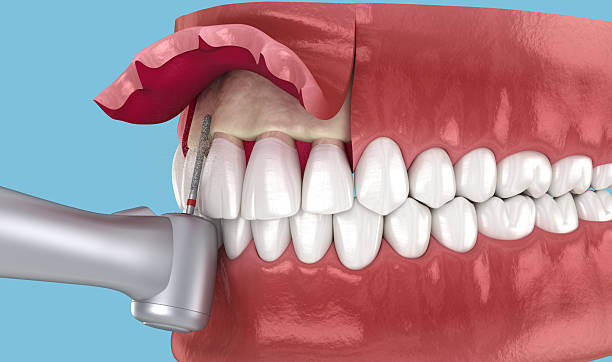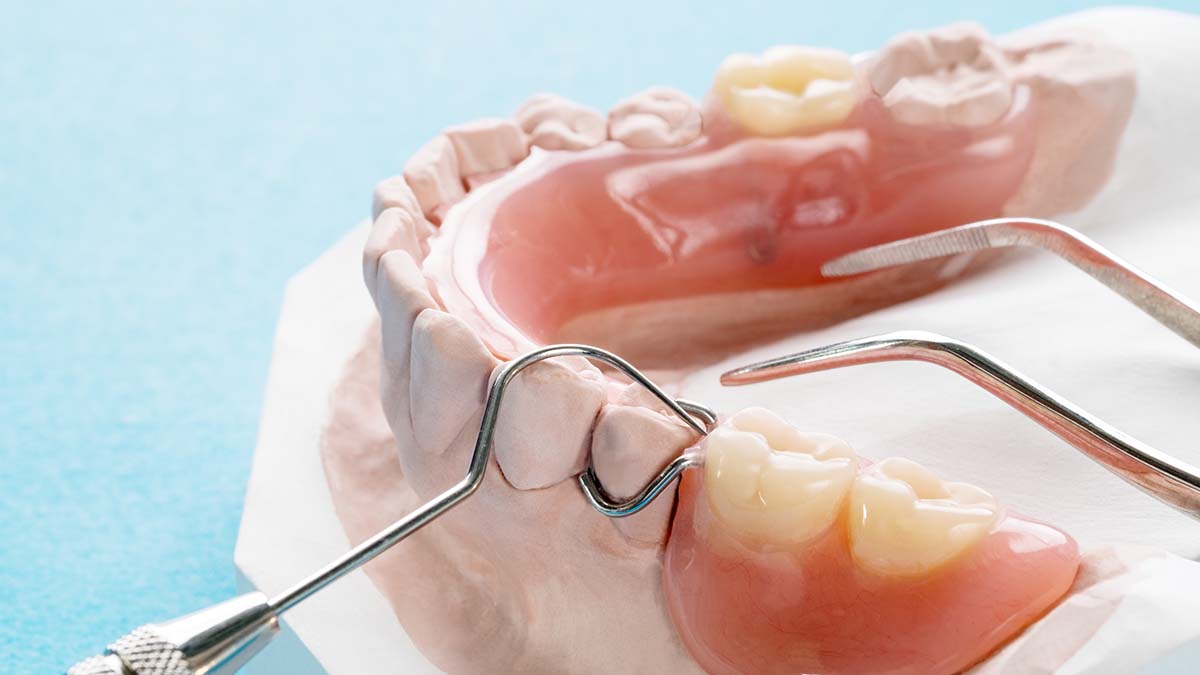Blog - Richmond, VA
Tips, Facts, And The
Latest In Dentistry

Gum Grafting for Receding Gums in Richmond: When Is It Necessary?

Gum recession is a common dental concern that can affect both comfort and appearance. When the gum tissue begins to pull away from the teeth, it exposes the tooth roots, leading to increased sensitivity, a higher risk of decay, and changes to the smile’s balance. Over time, untreated gum recession can contribute to tooth loss or bone deterioration.
For many patients, gum grafting is an effective solution to restore lost gum tissue and protect exposed roots. This article explains what gum grafting is, why it may be necessary, and what Richmond, VA patients can expect before, during, and after treatment. You’ll also learn about the types of gum grafting procedures available, their benefits, and how they can help protect both your oral health and your smile’s appearance.
What Is Gum Recession and Why Does It Happen?
Gum recession happens when the gum tissue surrounding the teeth pulls back or wears away, exposing more of the tooth’s root. This condition can progress gradually and may not cause pain in its early stages, which is why many patients don’t notice it until they experience tooth sensitivity or see visible changes in their gumline. In more advanced cases, the teeth may appear uneven or longer, and small spaces can form between the teeth near the gumline.
Common causes of gum recession include:
- Periodontal disease: The most common cause, resulting from infection and inflammation that destroy gum tissue and supporting bone.
- Aggressive brushing: Using excessive force or a hard-bristled toothbrush can gradually wear away gum tissue.
- Genetics: Some people are naturally predisposed to thinner or weaker gum tissue.
- Orthodontic treatments: Shifting teeth during orthodontic procedures may occasionally place stress on the gums.
- Teeth grinding or clenching: Chronic pressure can weaken the gums and bone supporting the teeth.
- Poor oral hygiene: Plaque and tartar buildup can lead to irritation and gum inflammation.
- Tobacco use: Smoking or chewing tobacco reduces blood flow, slowing healing and increasing gum vulnerability.
Gum recession is more than a cosmetic issue. It can lead to exposed roots that are more prone to decay, sensitivity, and discomfort when eating or brushing. Over time, untreated gum loss may contribute to bone loss and loosen teeth. Recognizing these signs early and seeking treatment helps prevent further damage and supports lasting gum and bone health.
What Is Gum Grafting?
Gum grafting is a minor surgical procedure that restores gum tissue lost due to recession and covers exposed tooth roots. It strengthens the gumline, improving both the health and appearance of your smile. During the procedure, new tissue, taken either from the patient’s own mouth or a carefully prepared donor source, is placed over the affected area to rebuild and protect the gumline.
This process not only restores the natural contour of the gums but also protects sensitive tooth roots from decay and damage. By reinforcing weakened areas, gum grafting helps maintain stronger support for the teeth and reduces the risk of further gum loss.
As a form of cosmetic gum surgery in Richmond, it improves both the health and appearance of your smile, restoring confidence along with protection.
Beyond its functional benefits, gum grafting also enhances smile aesthetics. Restoring proper gum coverage creates a more balanced gum-to-tooth ratio and helps reduce the appearance of long or uneven teeth. For many Richmond patients, this boost in confidence is just as meaningful as the improved oral health results.
Learn more about gum recession treatment Richmond and how gum grafting can help restore both comfort and confidence.
Types of Gum Grafting Procedures
There are several types of gum grafting procedures, each designed to treat specific levels and locations of gum recession. Your dentist will choose the best method based on the severity of recession, available tissue, and your overall oral health.
Connective Tissue Grafts
This is the most common type of gum grafting procedure. A small flap is created on the roof of the mouth to access connective tissue beneath the surface. This tissue is then placed over the exposed root and stitched in place.
Connective tissue grafts are widely used because they blend naturally with existing gum tissue and provide long-lasting coverage.
Free Gingival Grafts
In this method, tissue is taken directly from the surface layer of the palate instead of beneath it. This type of graft is often used to thicken thin gums rather than just covering exposed roots.
Free gingival grafts are helpful for patients whose gums are naturally thin or fragile and need extra reinforcement for long-term stability.
Pedicle Grafts
Pedicle grafts use nearby gum tissue that’s gently repositioned to cover the exposed root. Rather than taking tissue from another area, the gum is partially lifted and stretched over the recession site.
This option works best when there’s enough healthy gum tissue surrounding the affected tooth. Pedicle grafts promote faster healing since blood flow to the tissue remains intact.
When Is Gum Grafting Necessary?
Not every case of gum recession requires grafting, but it’s often recommended when the recession exposes the tooth roots or threatens the health of surrounding tissues. Ignoring gum loss can lead to sensitivity, decay, and even tooth instability.
You may need gum grafting if you notice:
- Tooth sensitivity to heat, cold, or touch
- Teeth that look longer than before
- Visible root surfaces
- Discomfort when brushing near the gumline
- A history of gum disease with continued tissue loss
- Gum recession that’s worsening over time
If you experience any of these signs, it’s a good idea to schedule an evaluation. Early intervention allows your dentist to preserve gum and bone health before the problem progresses.
Benefits of Gum Grafting for Richmond Patients
Gum grafting offers several health and cosmetic benefits for patients dealing with receding gums in Richmond. Often regarded as periodontal plastic surgery in Richmond, it combines both medical and aesthetic care to protect your teeth and enhance your smile. Beyond improving how your smile looks, it restores essential protection to your teeth and roots.
Main benefits include:
- Reduces tooth sensitivity by covering exposed roots
- Protects against root decay and further gum recession
- Improves smile appearance by restoring balance to the gumline
- Prevents future tooth loss caused by weakening of supporting structures
- Strengthens gum tissue for improved long-term oral health
Gum grafting also supports a healthier foundation for other dental treatments such as crowns, veneers, or orthodontics by stabilizing the gum tissue.
What to Expect During and After a Gum Graft Procedure
Understanding what happens during treatment can help ease any concerns about the process. At practices like Inspired Smiles, gum grafting is performed with comfort and care in mind.
During the Procedure:
- The area is numbed using local anesthesia to prevent discomfort.
- Depending on the type of graft, tissue is either taken from your palate or prepared from a donor source.
- The graft is then carefully placed and sutured over the affected area.
- A protective dressing may be applied to aid healing and keep the area clean.
After the Procedure:
Most patients experience mild soreness or swelling for a few days, which is easily managed with prescribed or over-the-counter medication. You’ll receive specific instructions for diet, oral hygiene, and activity restrictions to help promote proper healing.
Soft foods like yogurt, eggs, and soup are recommended for the first week, and brushing or flossing near the graft site should be avoided until advised by your dentist. Healing usually takes one to two weeks, with full tissue integration occurring over the next several months.
Richmond patients often find that recovery is easier than expected, and the long-term benefits of restored gum health far outweigh the temporary discomfort.
Schedule a Gum Grafting Consultation at Inspired Smiles in Richmond
If you’ve noticed your gums receding or your teeth feeling more sensitive, don’t wait to address it. Gum grafting can help restore gum tissue, protect exposed roots, and improve the look of your smile.
At Inspired Smiles in Richmond, our team provides gentle, personalized care for every patient. Using advanced techniques and a compassionate approach, we make each visit comfortable and stress-free. From diagnosis to recovery, your treatment plan is tailored to your needs, ensuring safe and predictable results.
Schedule your gum grafting consultation Richmond today to learn how gum grafting and gum tissue restoration in Richmond can help you regain a healthy, confident smile and long-lasting protection for your teeth.
Frequently Asked Questions
Is gum grafting painful?
Gum grafting is performed under local anesthesia, so you won’t feel pain during the procedure. Some mild tenderness or swelling afterward is normal and can be managed with medication and proper aftercare.
How long is the recovery after gum grafting?
Most patients recover within one to two weeks. Following your dentist’s post-operative instructions, such as eating soft foods and avoiding the surgical site, helps speed healing.
Can gum recession come back after a gum graft?
With good oral hygiene and routine dental checkups, results from gum grafting can last many years. However, continuing habits like aggressive brushing or smoking can contribute to future gum recession.
How much does gum grafting cost in Richmond, VA?
Costs can vary based on the number of teeth treated and the grafting technique used. Your dentist can provide an accurate estimate after an examination and benefits check.
How do I know if I need a gum graft?
If your teeth feel sensitive, look longer, or your gums appear uneven, you may be a candidate for gum grafting. A consultation with your Richmond dentist can determine if treatment is needed to restore and protect your gums.



